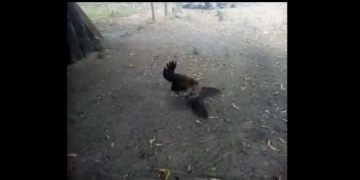Chinese scientists have discovered a high rate of environmental samples testing positive for SARS-CoV-2 in the wildlife trading area of a market in Wuhan, indicating the virus may exist in both humans and animals, not just related to raccoon dogs.
The study, led by scientist William J. Liu from the NHC Key Laboratory of Biosafety – National Viral Disease Control and Prevention Institute, part of the Chinese Center for Disease Control and Prevention (CDC), utilized viral gene sequences that had previously been uploaded to the international GISAID database, and later retracted.
These gene sequences were decoded by the Chinese CDC from samples taken at the Huanan Seafood Market, which is suspected by China to be the origin of the Covid-19 outbreak in Wuhan in 2019.

Huanan Seafood Market – Wuhan. (Image: GLOBAL TIMES).
This case had been widely discussed due to the retraction of data – which China claimed was to update – occurring after a Western international research group reported a link between raccoon dogs and the genetic material of SARS-CoV-2.
According to News Medical, the Chinese study, recently officially published in the leading scientific journal Nature, states that wildlife in the market included not only raccoon dogs, but also up to 10 stalls selling wildlife out of a total of 678 stalls in the market.
These 10 stalls were located in the Southwest section of the West Zone of the market and the Northwest section of the East Zone. Animals traded included several species of poultry, snakes, badgers, sika deer, bamboo rats, rabbits, hedgehogs, and giant salamanders, with snakes, crocodiles, and salamanders sold alive.
A total of 923 environmental samples along with 457 animal samples, including deceased animals in freezers or refrigerators, stray animals around the area, and their feces, were collected up to March 30, 2020.
Out of the 923 environmental samples from within and around the market in Wuhan, as many as 73 samples tested positive for SARS-CoV-2. Specifically, among the samples taken within the market, 64 out of 828 samples were positive.
Notably, the West Zone of the market, one of the areas selling wildlife, accounted for 74% of the positive samples. Up to 5 out of 14 samples taken from the market’s storage rooms tested positive.
24 out of 110 samples taken from the market’s drains or drainage channels tested positive for SARS-CoV-2 nucleic acid.
“The data indicates that the virus could be transmitted in the market through contaminated wastewater from infected humans or animals“ – the authors wrote in Nature, commenting that high foot traffic in the market may have amplified transmission, leading to some of the initial outbreaks in the early stages of the SARS-CoV-2 outbreak.
On January 22, 2020, health authorities also collected 30 environmental samples from another market named Dongxihu in Wuhan, with one sample testing positive.
“Three live viruses have been successfully isolated. The viruses from the market share nucleotide identities ranging from 99.9% to 100% with HCoV-19/Wuhan/IVDC-HB-01/2019 isolated from humans, SARS-CoV-2 lineage A (8782T and 28144C) found in an environmental sample.
RNA-seq analysis of the positive and negative environmental samples revealed a diverse range of vertebrate animals being traded. In summary, this study provides information on the distribution and prevalence of SARS-CoV-2 at the Huanan Seafood Market during the early stages of the Covid-19 outbreak” – the research group “Liu and colleagues” wrote in Nature.



















































